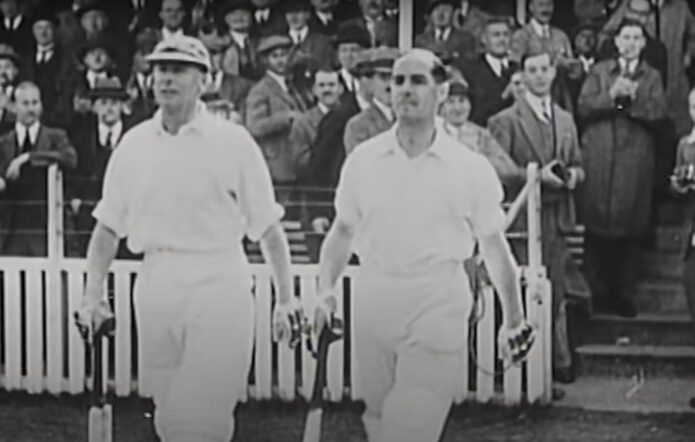Cricket that was regarded as the “Gentleman’s Game” has since gone through an astonishing metamorphosis.
The two competing formats of cricket, according to such a viewpoint, also demonstrate the landscape and contrast with each other as failing organizers fail.
The very beginning of cricket was dominated by the qualities of sportsmanship, patience and game for its play which could extend up to days hence these factors were more expected out of skills but stamina.
Such cricket appreciated the trade of staying at the crease, accuracy in bowling and placement in fielding. Nevertheless, with the altering world of cricket audience demanding a more lively action sport which was faster it should not be surprising that the game changed as well.
In this landscape, the introduction of T20 cricket brought about a tectonic change in that it lent to cricketing thereof a shorter, more action-packed version which saw explosive sets from ball one till seven – inclusive.
This piece focuses on cricket and goes across history by unveiling the changes that ushered it into a contemporary age of T20 cricket.
Exploring Historical Evolution:

The history of cricket is determined by gladiators enduring for days, recounting to professionals critical measures and accuracy. Strategic intelligence and grit got recognized in the traditional format, best evinced by Test cricket.
This age required not only physical strength but a true familiarity with the game’s nuances, since one session could change momentum completely.
Yet, with the increase of cricketing spectacle going international; the need for a more appealing and attractive form suitable for trading an audience became clearer.
Such a development led to the emergence of one-day internationals (ODIs) before twenty20s were later introduced. This resulted in revolutionizing cricket because it made clear that cricket could be quick and exciting, with drawing power.
Such changes not only took care of spectators’ waning attention but created a whole new category within the genre with agility and innovation as centerpiece beside more traditional qualities.
Strategies in the Online World:

The concept of the use of strategic thinking in gambling is also not to be forgotten. Just like cricket teams formulate strategies in order to defeat their opponents, online gamblers must also plan on the moves of virtual enemies.
It encompasses the ability to understand gameplay dynamics, explores probabilistic calculations and other player’s psychological behavior.
Like cricket where a move in the direction of the captain can turn around how the whole match will go, similarly strategy taken by players in online gambling has great significant effect on ending bet hit or game win giving a major role.
Being able to master these strategies can make a consistent series of wins, as is the case with professional cricket whose preparation and foresight mirror such human developed skills. To explore the fascinating world of gaming strategies and how they parallel those in cricket, click here.
Impact of T20 Leagues:

The introduction of T20 leagues, as embodied by the IPL changed cricket tactics. Given the compact nature of format, a forceful and flashy style was necessary hence with crushing hits from bat creative shot making along with athletic fielding.
This move resulted in identifiable roles within teams like the finisher or death bowler only highlighting even more strategic levels added to T20 cricket.
Cricketers changed their techniques to suit the requirement of T20 cricket which led to a change in breed , born different from ‘out of reach’ cricketers but matching them In every bit as far Experience is concerned.
This flexibility is now a prized quality as players are required to act in different situations and overloads.
In addition to that, the T20 leagues redesigned not only individual player strategies but also team relationships. Such franchise-based leagues ensured that players from disparate cricketing backgrounds would converge to share the best practice which in turn resulted in cross pollination of ideas.
This was due to a multicultural melting pot and this created cricket with a worldwide culture where learning and innovation became major factors of success. More teams started to experiment with tactics never seen on that scale before – unorthodox field placements, ‘‘mystery men’’, etc. just for a competitive advantage in return.
The game was thus made both funny and exciting subject to improvisation in accordance with which each player acts, grabbing hearts of cricket lovers all over the world leading to growth of playability features through evolving process.
Iconic Moments and Global Influence:

At every step in this evolution, iconic moments have remained to stand as markers for cricket’s strategic narrative. Memorable innings that ran against the grain, daring grand masterstrokes which turned tables around in games and nail-biting finishes to endure eyes wide open were highlights of ongoing changes taking place as days passed by.
These incidents may have emphasized individual excellence; but the clinical genius, in itself, was a reflection of the battlefield transformation taking place within soccer.
From the great prowess of Sir Don Bradman whose new technique and long sightedness have left no equal, through to T20 mavericks like AB de Villiers or Chris Gayle every generation has added its own unique piece to this cricketing puzzle making it richer than ever.
This effect of T20 strategies does not however cease in the boundary ropes but influences worldwide sport popularity. Cricket, thus what was once limited to a few nations has reached global status with T20 leagues attracting different peoples.
The growth has also been supported by the format’s convenience and captivating emotional aspect attracting a much wider audience including beginners.
Thanks to the amalgam of tradition and innovation, cricket has become a spectacle that leaves no human being anywhere in admiration while creating an ideal base for further expansion of uncharted markets.
Conclusion:
Overall, the development of cricket approaches from orthodox old «Gentleman’s Game» to the T20 revolution is a very instructive journey which reflects evolution and change in this world. It has more than just managed to survive but actually thrive due to its adaptive nature and embracing innovativeness.
The emergence of T20 cricket has not only led to the change in format of games considering its strategic underpinning, it also appears more engaging and accessible globally. However, cricket establishes the balance between tradition and innovation over time.
Cricket will still remain not only a sport but the reflection of those mentioned above social changes so it is possible yo say that cricket becomes and forever remains a global showpiece spectacle.
A cruise to the rapids of T20s after enjoying slow beats in Test cricket defines evolution crave, an awakening from beauty of purity drift into passion for fiery initiative.
This flexibility not only testifies the stamina of cricket as an activity but also to its ability to be responsive and engaging, guaranteeing events forever in the souls of spectators everywhere throughout the globe.

